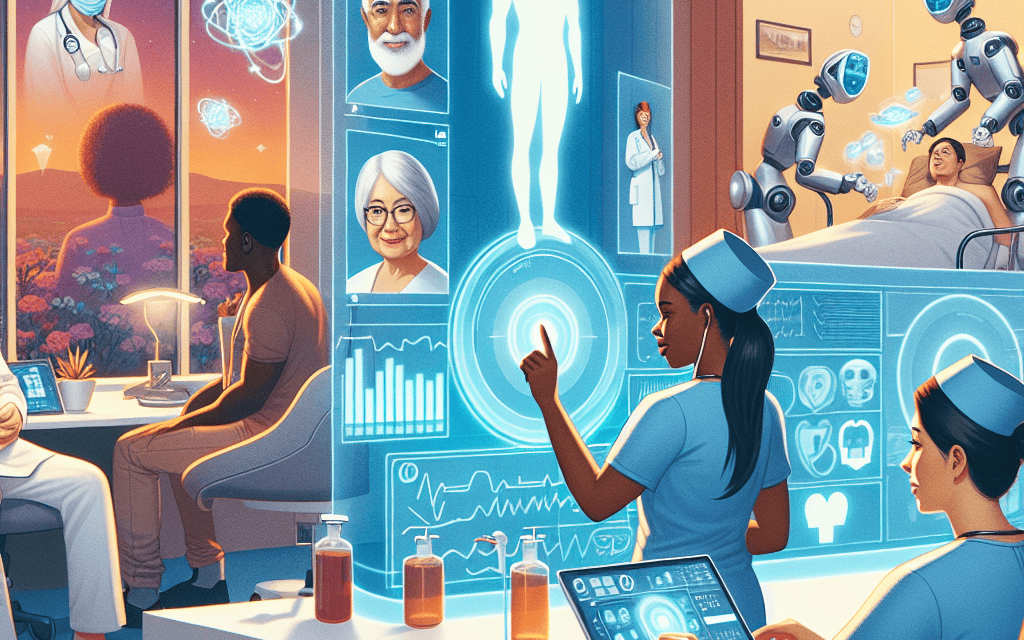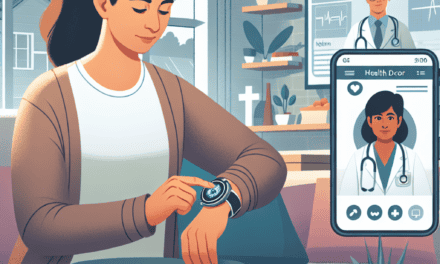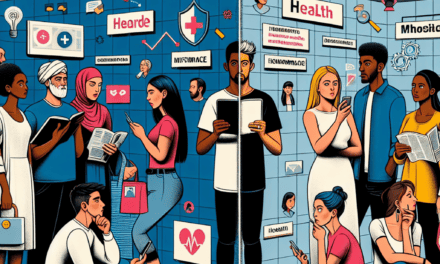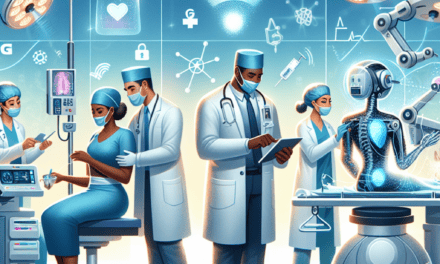-
Table of Contents
- The Future of Nursing: Technology, Telehealth, and Beyond
- 1. The Integration of Advanced Technology in Nursing
- 1.1 Electronic Health Records (EHRs)
- 1.2 Artificial Intelligence and Machine Learning
- 1.3 Robotics in Nursing
- 1.4 Wearable Technology
- 1.5 Virtual Reality and Simulation
- 2. The Rise of Telehealth in Nursing
- 2.1 Telehealth Services and Nursing Practice
The Future of Nursing: Technology, Telehealth, and Beyond

The nursing profession is on the cusp of a transformative era, driven by rapid advancements in technology and the increasing integration of telehealth services. As healthcare systems worldwide grapple with challenges such as aging populations, chronic disease management, and resource constraints, the role of nurses is evolving to meet these demands. This article explores the future of nursing through the lens of technology, telehealth, and other emerging trends, providing a comprehensive overview of how these elements are reshaping the profession.
1. The Integration of Advanced Technology in Nursing
Technology is revolutionizing the healthcare landscape, and nursing is no exception. From electronic health records (EHRs) to artificial intelligence (AI), nurses are leveraging technology to enhance patient care, improve efficiency, and reduce errors. This section delves into the various technological advancements that are becoming integral to nursing practice.
1.1 Electronic Health Records (EHRs)
Electronic Health Records have become a cornerstone of modern healthcare, providing a digital version of a patient’s paper chart. EHRs are real-time, patient-centered records that make information available instantly and securely to authorized users. They contain a patient’s medical history, diagnoses, medications, treatment plans, immunization dates, allergies, radiology images, and laboratory test results.
The adoption of EHRs has significantly impacted nursing practice by streamlining documentation processes, reducing paperwork, and improving the accuracy of patient data. Nurses can now access comprehensive patient information at the point of care, enabling them to make informed decisions quickly. Moreover, EHRs facilitate better communication and coordination among healthcare providers, leading to improved patient outcomes.
Despite these benefits, the transition to EHRs has not been without challenges. Nurses often face issues such as system usability, data entry errors, and the need for ongoing training. However, as technology continues to evolve, these systems are becoming more intuitive and user-friendly, allowing nurses to focus more on patient care rather than administrative tasks.
1.2 Artificial Intelligence and Machine Learning
Artificial Intelligence (AI) and Machine Learning (ML) are making significant inroads into healthcare, offering new tools for nurses to enhance patient care. AI algorithms can analyze vast amounts of data to identify patterns and predict outcomes, assisting nurses in clinical decision-making.
For instance, AI-powered predictive analytics can help nurses identify patients at risk of developing complications, enabling early intervention and potentially preventing adverse events. Machine learning models can also assist in diagnosing conditions by analyzing medical images, such as X-rays and MRIs, with high accuracy.
Moreover, AI is being used to develop virtual nursing assistants that can perform routine tasks, such as monitoring vital signs and reminding patients to take medications. These virtual assistants can free up nurses’ time, allowing them to focus on more complex patient care activities.
While AI holds great promise, it also raises ethical and practical concerns. Issues such as data privacy, algorithmic bias, and the need for human oversight must be addressed to ensure that AI is used responsibly in nursing practice.
1.3 Robotics in Nursing
Robotics is another area where technology is making a significant impact on nursing. Robots are being used to perform tasks that are repetitive, physically demanding, or hazardous, thereby reducing the workload on nurses and minimizing the risk of injury.
For example, robotic systems are being employed to assist with patient lifting and transfer, reducing the physical strain on nurses and improving patient safety. In addition, robots are being used for medication dispensing, ensuring accurate dosing and reducing the risk of medication errors.
Robots are also being utilized in telepresence, allowing nurses to interact with patients remotely. This technology is particularly useful in rural or underserved areas where access to healthcare professionals may be limited.
As robotics technology continues to advance, its applications in nursing are likely to expand, offering new opportunities to enhance patient care and improve efficiency.
1.4 Wearable Technology
Wearable technology is becoming increasingly popular in healthcare, providing nurses with real-time data on patients’ health status. Devices such as smartwatches, fitness trackers, and biosensors can monitor vital signs, physical activity, and other health metrics, offering valuable insights into patients’ well-being.
Nurses can use this data to track patients’ progress, identify potential health issues early, and tailor interventions to meet individual needs. Wearable technology also empowers patients to take an active role in managing their health, promoting self-care and adherence to treatment plans.
However, the widespread adoption of wearable technology in nursing practice requires addressing challenges such as data security, device accuracy, and integration with existing healthcare systems. As these issues are resolved, wearable technology is poised to become an integral part of nursing care.
1.5 Virtual Reality and Simulation
Virtual Reality (VR) and simulation technologies are transforming nursing education and training, providing immersive and interactive learning experiences. These technologies allow nurses to practice clinical skills in a safe and controlled environment, enhancing their competence and confidence.
For example, VR simulations can replicate complex clinical scenarios, enabling nurses to develop critical thinking and decision-making skills. Simulation-based training can also be used to teach procedures such as wound care, catheter insertion, and emergency response, ensuring that nurses are well-prepared for real-world situations.
In addition to education, VR is being explored as a tool for patient care, offering therapeutic interventions for pain management, anxiety reduction, and rehabilitation. As VR technology continues to evolve, its applications in nursing are likely to expand, offering new opportunities for innovation in patient care and education.
2. The Rise of Telehealth in Nursing
Telehealth has emerged as a vital component of healthcare delivery, particularly in the wake of the COVID-19 pandemic. It offers a convenient and efficient way for patients to access care, while also expanding the reach of healthcare providers. This section explores the role of telehealth in nursing and its potential to transform patient care.
2.1 Telehealth Services and Nursing Practice
Telehealth encompasses a wide range of services, including virtual consultations, remote monitoring, and tele-education. For nurses, telehealth offers an opportunity to provide care beyond the traditional clinical setting, reaching patients in their homes and communities.
Virtual consultations allow nurses to assess, diagnose, and manage patients remotely, using video conferencing and other digital communication tools. This approach is particularly beneficial for patients with mobility issues, those living in remote areas, or those who require frequent follow-up care.
Remote monitoring technologies enable nurses to track patients’ health status in real-time, using devices such as blood pressure monitors, glucose meters, and heart rate sensors. This data can be used to identify changes in patients’ conditions early, allowing for timely interventions and reducing the risk of complications.
Tele-education provides an opportunity for nurses to educate patients and their families about health management, disease prevention, and self-care practices.





